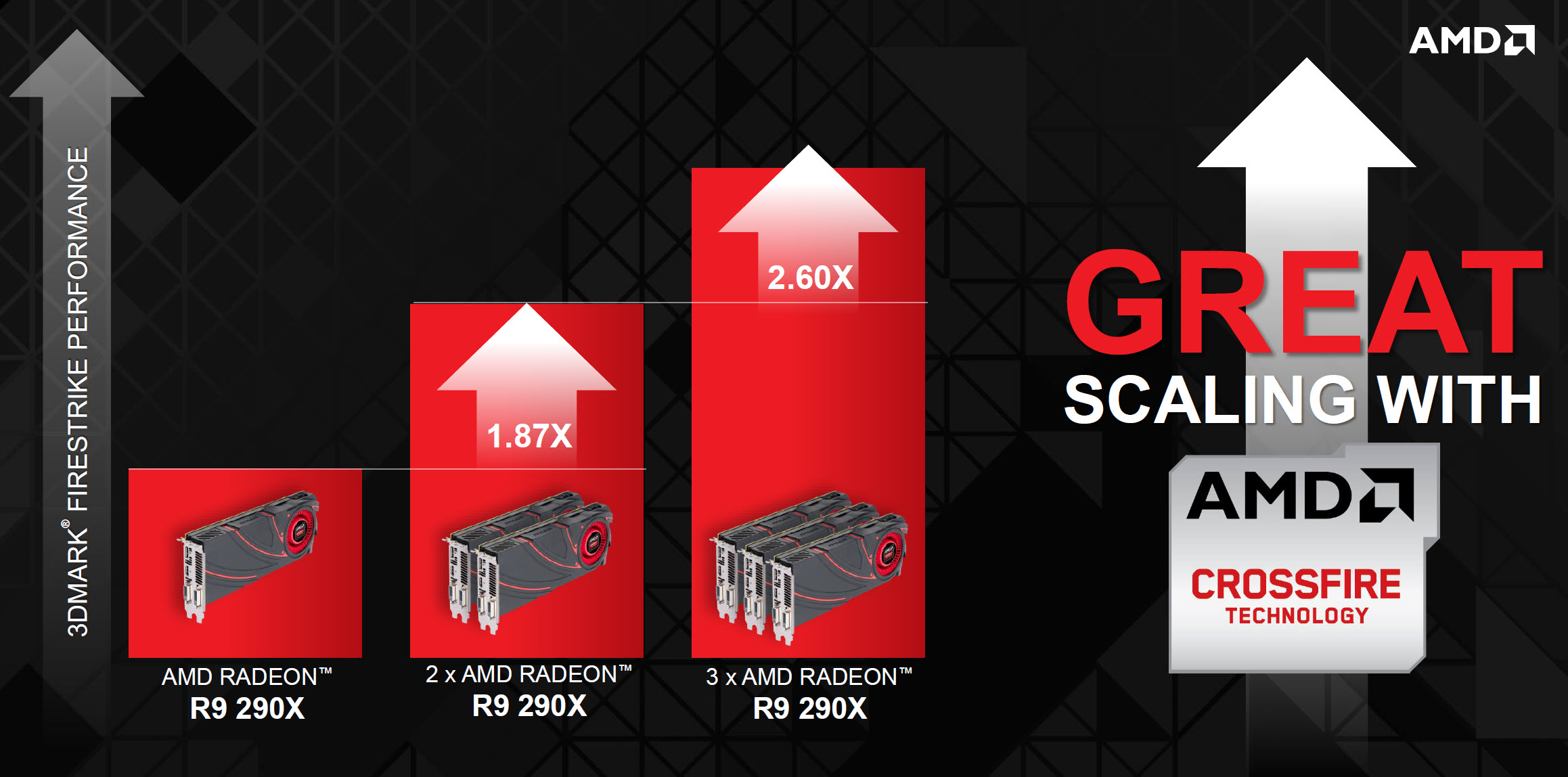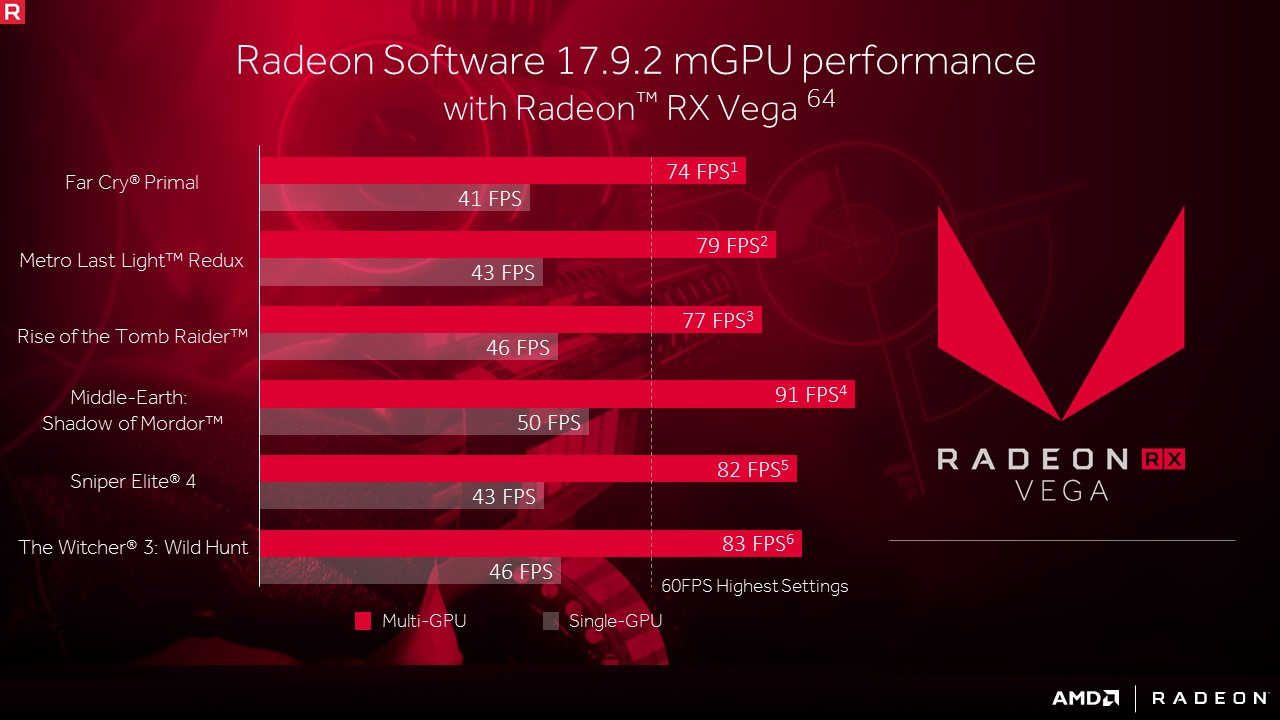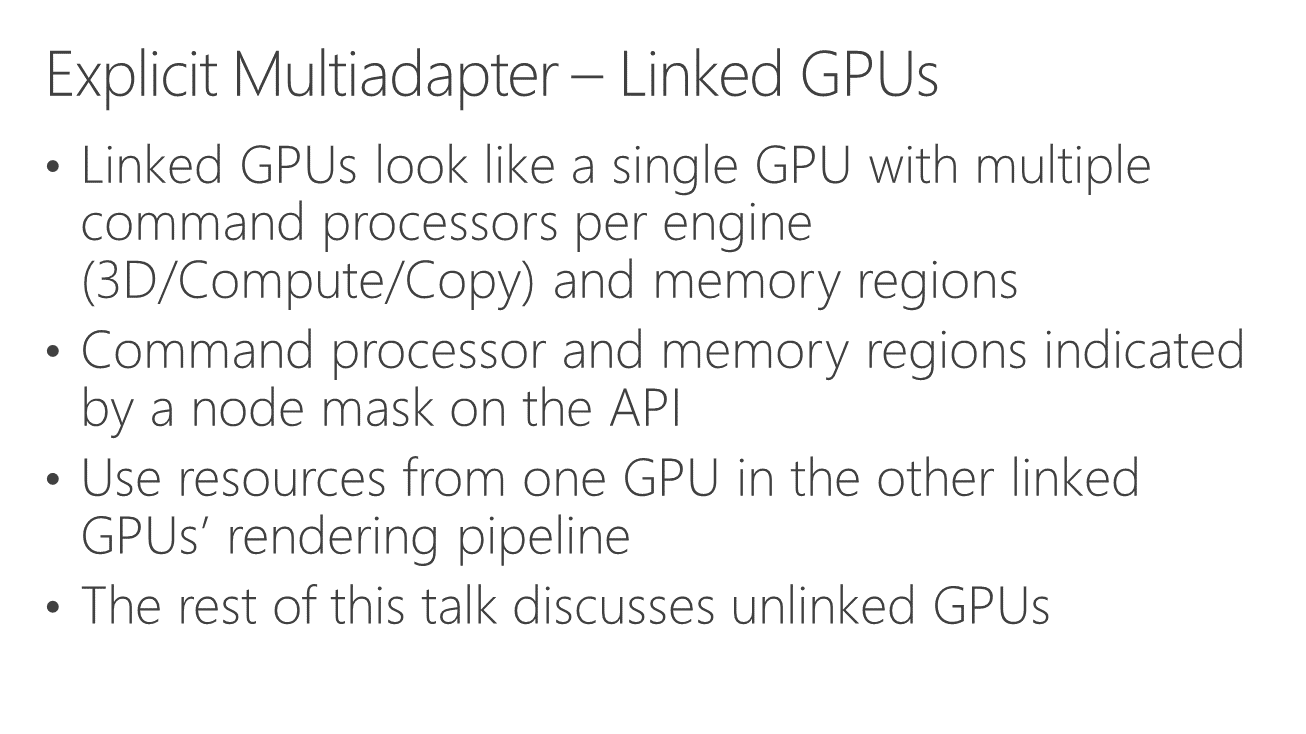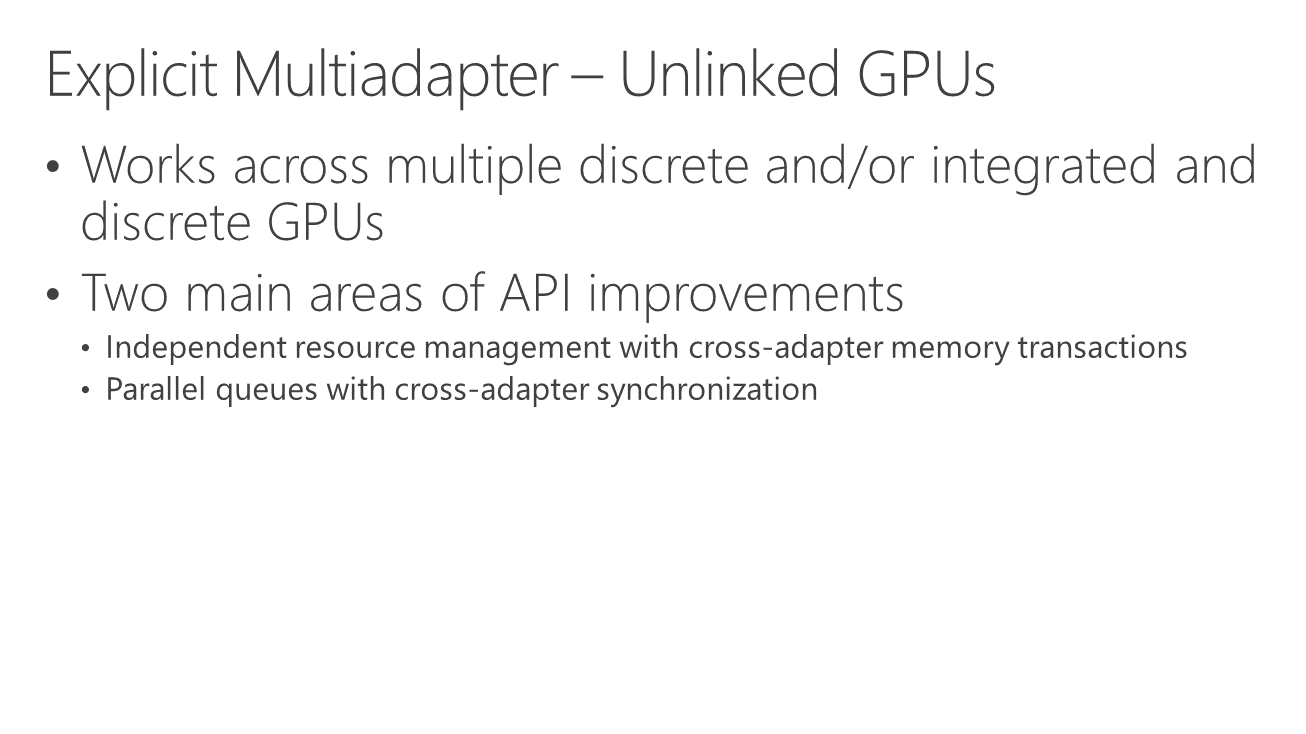Hello everyone
I have seen many people making mistakes about MultiGPU technology or have difficulties understanding; therefore,I decided to write a guide that helps you understand it better.
So,let's start!
What is SLI ?
NVIDIA SLI is a platform that allows you to scale graphics performance by combining multiple NVIDIA graphics solutions in a single system.
What is Nvidia Hybrid SLI?
From Hothardware.com :
NVIDIA's Hybrid SLI technology gives users the ability to pair an IGP, or mGPU (motherboard GPU), with a discreet graphics card, or cards, for two new modes of operation. NVIDIA calls these new modes Hybrid Power and GeForce Boost.
GeForce Boost does what its name suggests. By coupling the motherboard's integrated GPU with a discreet graphics card, the 3D rendering workload is shared between the two GPUs for a boost in performance. Currently, GeForce Boost is only supported by GeForce 8400 GS and 8500 GT discreet cards, as for the IGP, only the next-gen nForce 700a series of chipsets due to arrive this quarter will be supported initially.
What is CrossFire ?
CrossFire is a high-performance PC Gaming Platform technology that enables multiple ATI Radeon graphics cards and a CrossFire-ready motherboard in a single computer to increase graphics quality and performance.
What is CrossFireX(Quad CrossFire)?
From Techreport.com:
CrossFireX is, quite simply, an extension of the CrossFire dual-GPU feature to three and four GPUs.
Here's the chart from AMD's website regarding which cards can you use in crossfire,motherboard support and more.
3XXX to 5xxx Family
5XXX to 7XXX Family
R7 and R9 Family(Thanks for the link damric)
What is AMD Hybrid CrossFire?
Hybrid CrossFire allows integrated graphics and low-end discrete graphics to be used in CrossFire mode.
Overall,both Hybrid CrossFire and Hybrid SLI are mainly for power savings and aren't a good solution for gaming and 3D performance(overall).
Can you use SLI on a CrossFire board or CrossFire on a SLI board ?
Well , in general , the answer is NO;however,there are some methods(like driver hacks) that allows you to do this.
Caution:There is no guarantee that this driver hacks work,so do it at your own risk!
With the release of Core "i" CPUs,Intel announced chipsets(P55,X58,Z68,etc.) that allow users to use CrossFire and SLI on the same motherbard.(However,still some of them only support either SLI or CrossFire)
But the newer chipsets like Z77,X79 etc. usually support both SLI and CrossFire.And it's safe the say the future models will be the same;supporting both SLI and CrossFire.
Do the cards have to be same model?
For "Most" Nvidia cards the answer is yes,but there are some exceptions too,such as pairing a GTS 250 with a 9800GTX+,which can only be done if both cards have the same amount of memory. (It's possible because GTS 250 is actually a re-badged 9800GTX+)
But again there are some cards like 9800GT and 8800GT which have the same specifications but in general you can't pair them in SLI.(Some users have reported that by flashing a 8800GT's BIOS to a 9800GT's BIOS,you can do it,but its risky and not recommended.)
But for AMD/ATI cards,It's different.
For older models like X1900 cards,you have to use the same/master card in order to run them in CrossFire mode.
But for HD 2xxx cards and up,there are no master cards so you simply can use 2(or more) (same)cards in Crossfire.
So the general answer is yes,with some exceptions.So it's recommended to use the same cards for best results.
You can find more information regarding matching cards in SLI/Crossfire at the end of this guide.
What about the memory? Can you use 7800GTX 256MB with it's 512MB version ?
For Nvidia cards,the general answer is no.
http://www.slizone.com/object/slizone_ask_mmm013.html
"Another misconception is that the GeForce 7800 GTX (256MB) graphics cards and the GeForce 78000 GTX 512 graphics cards can be paired together. Since these graphics cards use different GPUs, they unfortunately CAN'T be paired together. Always refer the Learn More or Build sections of SLIZone."
So,you generally can't pair a 7800GTX 256 with 7800GTX 512 or GTX 460 768MB with its 1GB version unless you use some 3rd party applications(which isn't recommended).
However,if you manage to run these cards in SLI,then the model,with higher amount of RAM,will reduce it's RAM to match the other card.
For ATI cards,it's different.
As an example,you can Crossfire HD 5870 2GB with it's 1GB version (but again the 2GB version lowers it's memory to 1GB)
So,generally,,it's recommended to use 2(or more than 2) identical cards with the same amount of memory.
What about brands ?
Brands don't matter,as long as they're the same card with the same memory/speeds.
What happens if the cards have different speed
For ATI cards;
One of the cards will raise/lower its clock speeds to reach the other card's speeds.
For Nvidia cards;
Well it "was" like ATI with older drivers, but with new drivers its quite different.If you use 2(or more) Nvidia cards with different clock speeds in SLI mode,none of them will change their clocks and they will perform at their default clock speed.
Again,that's why I usually recommend using the same cards in multiGPU modes.
A Very important note about bridges
It's been frequently asked whether to use 1 or 2 SLI/Crossfire bridges.
The answer is that it will work with 1 bridge without any problems but I recommend using both bridges because:
1_You will never lose either of these bridges.
2_Some users have reported a minimal(not noticeable) performance increase.
3_With the release of the 10XX series from Nvidia both bridges can have a noticeable gain in performance. Nvidia now has what they call an HB SLI Bridge that uses both sets of contacts the card.
Do SLI or CrossFire always improve performance ?
Not always.
There are some games that don't benefit from either SLI or CrossFire or require a patch in order to fully utilize both cards.
For example,Flight simulator X doesn't benefit from either SLI or CrossFire;on the other hand,BattleField 4 benefits from this technologies.It depends on the game to be honest.
This link has some great comparisons between single and multiGPU configurations in numerous games
http://www.tomshardware.com/reviews/crossfire-sli-scaling,2742-8.html
What are SLI and CrossFire certified Motherboards?
SLI certified motherboards:
http://www.slizone.com/object/slizone_build_mobo.html
CrossFire certified Motherboards:
http://ati.amd.com/technology/crossfire/buildyourown1.html
Is the memory important??
No,your computer's RAM isn't at all related to the cards you are using,just make sure it's compatible with the motherboard and CPU.
What are the power requirements for SLI or CrossFire ?
For every configuration,the power requirement is different.
Nvidia cards:
http://www.slizone.com/object/slizone_build_psu.html
AMD/ATI cards:
http://sites.amd.com/us/game/products/certified/Pages/certified-power-supplies.aspx
There are some compatible models that aren't listed so always check with the manufacturers website at first.
Is it really necessary to use SLI or CrossFire ?
It all comes down to 2 factors:
1)The games that you play
2)The resolutions that you play at
As mentioned,there are some games that don't benefit from either SLI or Crossfire;also both SLI/Crossfire really shine when you play "at least on" 1080p,even on this resolution,a single powerful card can handle everything fine.
Is it better to get 2 mid-range cards or 1 high-end card?
It really depends on you.I "personally" prefer a single high-end card rather than 2 mid-range cards because usually,the single card produces less heat and has less power consumption but it may cost more too.
So it all comes down to personal preference and budget.
Do SLI or CrossFire double the memory ?
No.Adding another card with more memory doesn't double the overall memory of your cards.
Which is better , SLI or CrossFire ?
It again comes to personal preference and the games that you play.
There are some specific games that scale better under SLI and vice-versa.
A note about Motherboards
For 2-way SLI,motherboards either support CrossFire at dual x16,dual x8 or x16x4 speeds.
The first will give you the best performance.
Dual x8 is also good and performs on par with dual x16 in most games.
But x16x4 is kinda different.
On PCI-E 1.0 boards/cards,there is a huge difference between x16x4 and dual x16(and 8x).
On PCI-E 2.0/3,0 boards/cards;however,the performance gap isn't as high.(The performance is notable in some games though,especially on high resolutions)
Generally, recommend dual x16 or dual x8 for MultiGPU setups.
Here is a good article which compares CrossFire performance between dual x16,dual x8 and x16x4
http://www.tomshardware.com/reviews/crossfire-pci-express,2095.html
List of NVIDIA and AMD/ATI MultiGPU compatible Graphic Cards: (All of them are PCI-EXPRESS cards,AGP cards don't support any kind of multiGPU setups)
NVIDIA cards(Desktop models)
Geforce TITAN Family:
NVIDIA GEFORCE GTX TITAN X
NVIDIA GEFORCE GTX TITAN Z
NVIDIA GEFORCE GTX TITAN BLACK
NVIDIA GEFORCE GTX TITAN
Geforce GTX 10 Family:
NVIDIA GeForce GTX 1080
NVIDIA GeForce GTX 1070
Geforce GTX 900 Family:
NVIDIA GeForce GTX 980ti
NVIDIA GeForce GTX 980
NVIDIA GeForce GTX 970
NVIDIA GeForce GTX 960
Geforce GTX 700 Family:
NVIDIA GEFORCE GTX 780Ti
NVIDIA GEFORCE GTX 780
NVIDIA GEFORCE GTX 770
NVIDIA GEFORCE GTX 760
Geforce GTX 600 Family:
NVIDIA GEFORCE GTX 680
NVIDIA GEFORCE GTX 670
NVIDIA GEFORCE GTX 660
NVIDIA GEFORCE GTX 660ti
NVIDIA GEFORCE GTX 650ti BOOST (must be the boost model, normal 650/650ti's are NOT SLI ready)
Geforce GTX 500 Family:
NVIDIA GEFORCE GTX 590(1 PCB*)
NVIDIA GEFORCE GTX 580
NVIDIA GEFORCE GTX 570
NVIDIA GEFORCE GTX 560Ti
NVIDIA GEFORCE GTX 560
NVIDIA GEFORCE GTX 550Ti
NVIDIA GeForce GT 545 DDR3
Geforce 400 Family:
NVIDIA GEFORCE GTX 480
NVIDIA GEFORCE GTX 470
NVIDIA GEFORCE GTX 465
NVIDIA GEFORCE GTX 460
NVIDIA GEFORCE GTS 450
Geforce 200 Family:
NVIDIA GEFORCE GTX 295
NVIDIA GEFORCE GTX 285
NVIDIA GEFORCE GTX 280
NVIDIA GEFORCE GTX 275
NVIDIA GEFORCE GTX 260 Core 216(You can pair it with the Core 192 version.)
NVIDIA GEFORCE GTX 260 Core 192
NVIDIA GEFORCE GTX 250(You can pair it with 9800GTX+ in SLI configuration,however make sure that both cards have the same amount of memory)
Geforce 100 Family:
GeForce GTS 150
GeForce GT 130
GeForce GT 120
Geforce 9 Family:
NVIDIA GEFORCE 9800GX2 (2 PCB's)
NVIDIA GEFORCE 9800GTX+(You can pair it with a Nvidia 9800GTX in SLI configuration,but it's recommended to use the 9800GTX+ card in the first PCI-E 16x slot.)
NVIDIA GEFORCE 9800GTX
NVIDIA GEFORCE 9800GT
NVIDIA GEFORCE 9600GT
NVIDIA GEFORCE 9600GSO
NVIDIA GEFORCE 9500GT
NVIDIA GEFORCE 9400GT
Geforce 8 Family:
NVIDIA GEFORCE 8800ULTRA
NVIDIA GEFORCE 8800GTX
NVIDIA GEFORCE 8800GTS 512
NVIDIA GEFORCE 8800GT
NVIDIA GEFORCE 8800GTS 640
NVIDIA GEFORCE 8800GTS 320
NVIDIA GEFORCE 8800GS
NVIDIA GEFORCE 8600GTS
NVIDIA GEFORCE 8600GT
NVIDIA GEFORCE 8500GT
NVIDIA GEFORCE 8400GS
Geforce 7 Family:
NVIDIA GEFORCE 7950GX2 (2 PCB's)
NVIDIA GEFORCE 7900GTX
NVIDIA GEFORCE 7950GT
NVIDIA GEFORCE 7900GT
NVIDIA GEFORCE 7900GS
NVIDIA GEFORCE 7800GTX 512
NVIDIA GEFORCE 7800GTX 256
NVIDIA GEFORCE 7800GT
NVIDIA GEFORCE 7600GT
NVIDIA GEFORCE 7600GS
NVIDIA GEFORCE 7300GT
NVIDIA GEFORCE 7300GS
NVIDIA GEFORCE 7300LE
Geforce 6 Family:
NVIDIA GEFORCE 6800ULTRA
NVIDIA GEFORCE 6800GT
NVIDIA GEFORCE 6800GS
NVIDIA GEFORCE 6800
NVIDIA GEFORCE 6800LE
NVIDIA GEFORCE 6600GT
NVIDIA GEFORCE 6600
NVIDIA GEFORCE 6600LE
NVIDIA cards(Notebook models)
Geforce 900M Family:
GeForce GTX 980M
GeForce GTX 970M
GeForce GTX 965M
Geforce 800M Family:
NVIDIA GEFORCE GTX 880M
NVIDIA GEFORCE GTX 870M
NVIDIA GEFORCE GTX 860M
Geforce 700M Family:
NVIDIA GEFORCE GTX 780M
NVIDIA GEFORCE GTX 770M
NVIDIA GEFORCE GTX 765M
NVIDIA GEFORCE GTX 760M
NVIDIA GEFORCE GTX 750M
Geforce 600M and MX Family:
GeForce GTX 680MX
GeForce GTX 660M
GeForce GTX 670MX
GeForce GTX 675MX
GeForce GTX 670M
GeForce GTX 675M
Geforce 500M Family:
NVIDIA GEFORCE GTX 580M
NVIDIA GEFORCE GTX 570M
NVIDIA GEFORCE GTX 560M
Geforce 400M Family:
NVIDIA GEFORCE GTX 485M
NVIDIA GEFORCE GTX 480M
NVIDIA GEFORCE GTX 470M
NVIDIA GEFORCE GTX 460M
Geforce 200M Family:
NVIDIA GEFORCE GTX 280M
NVIDIA GEFORCE GTX 260M
Geforce 100M series:
NVIDIA GEFORCE GTS 160M
NVIDIA GEFORCE GTS 150M
NVIDIA GEFORCE GTS 130M
Geforce 9 Family:
NVIDIA GEFORCE 9800MGTX
NVIDIA GEFORCE 9800MGT
NVIDIA GEFORCE 9800MGTS
Geforce 8 Family:
NVIDIA GEFORCE 8800MGTX
NVIDIA GEFORCE 8700MGT
NVIDIA GEFORCE 8600MGT
Geforce 7 Family:
NVIDIA GEFORCE 7950GTX
NVIDIA GEFORCE 7900GTX
NVIDIA GEFORCE 7800GTX
AMD cards(Desktop models)
AMD Radeon RX Family:
AMD RX 480
AMD Radeon R9 Family:
AMD R9 295X2
AMD R9 290X
AMD R9 290
AMD R9 280X
AMD R9 280
AMD R9 270X
AMD R9 270
AMD Radeon R7 Family:
AMD R7 265
AMD R7 260X
AMD R7 260
AMD R7 250X
AMD R7 250
AMD R7 240
AMD HD 7xxx Family:
AMD HD 7970
AMDI HD 7950
AMD HD 7870
AMD HD 7850
AMD HD 7770
AMD HD 7750
AMD HD 6xxx Family:
AMD HD 6990(1 PCB)
AMD HD 6970
AMD HD 6950
AMD HD 6870
AMD HD 6850
AMD HD 6670
AMD HD 6570
AMD HD 5xxx Family:
AMD HD 5970
AMD HD 5870 Eyefinity 6 edition(Can be used in CrossFire with the non-Eyefinity 6 version)
AMD HD 5870
AMD HD 5850
AMD HD 5830
AMD HD 5770
AMD HD 5750
AMD HD 5670
AMD HD 5570
AMD HD 5550
AMD HD 5450
AMD HD 4xxx Family:
AMD HD 4890
AMD HD 4870X2(1 PCB)
AMD HD 4870
AMD HD 4850
AMD HD 4830
AMD HD 4770
AMD HD 4750
AMD HD 4670
AMD HD 4650
AMD HD 4550
AMD HD 4350
AMDHD 3xxx Family:
AMD HD 3870X2(Read the extra information about HD 5970,its the same for HD 3870X2)
AMD HD3870
AMD HD 3850
AMD HD 3830
AMD HD 3650
AMD HD 3470
AMD HD 3450
AMD HD 2xxx Family:
AMD HD 2900XT
AMD HD 2900PRO
AMD HD 2900GT
AMD HD 2600XT
AMD HD 2600 PRO
AMD HD 2400XT
AMD HD 2400 PRO
AMD X19xx Family:
AMD X1950XTX
AMD X1950PRO
AMD X1900XTX
AMD X1900XT
AMD X1900GT(Unlike X1900XT and 1900XTX which require a Master card to run in CrossFire,this card can be paired with another X1900GT card)
AMD X1xxx Family:
AMD X1800XT
AMD X1800GTO
AMD X1800XL
AMD X1650 PRO
AMD X1650XT
AMD X1600XT
AMD X1600PRO
AMD X1550
AMD X1300XT
AMD X1300PRO
AMD X1300
AMD X850 Family:
AMD X850XT-PE
AMD X850XT
AMD X850 PRO
AMD Cards(Notebook models)
AMD HD 6xxx Family:
AMD HD 6970M
AMD HD 5xx Family:
AMD HD 5870M
AMD HD 4xxx Family:
AMD HD 4870M
AMD HD 3xxx Family:
AMD HD 3870M
* PCB stands for Printed Circuit Board, its the hard "plastic-like" colored part in a graphics card/motherboard.
So,I hope reading this guide helps you understand MultiGPU technology better.I've kept this topic opened so that you can ask your questions and post your suggestions about the it.
Special thanks to emp,4745454b,alias_the_?jester and MouseMonkey and NukeMaster for helping making this guide.








